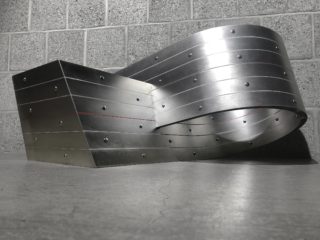What I miss most about New Orleans, the city where I grew up, is the magnificent trees—the oak trees, especially. To me, those majestic, aged trees embody both the beauty and power of nature. I think of how you can’t leave a building abandoned for long in New Orleans before it is subsumed by vegetation. The haunting images of structures that have been reclaimed in this way remind me that nature can, and will, go on without us. But we can’t go on without nature.
The struggle of man versus nature is at the forefront of life in New Orleans, where devastating hurricanes are frequent. It’s a conflict the rest of the world is now reckoning with as well. As we experience the effects of climate change, we have no choice but to evaluate our actions, from assessing how we design our buildings, to determining how we live and work in them every day.
Finding solutions to this age-old struggle is complex, but the outcome of doing nothing couldn’t be more clear. Climate change will render parts of the world uninhabitable. Already, countless families have been forced to relocate due to advancing sea levels. This isn’t happening in far-flung, remote corners of the world, but in major cities like New York. As habitable land and resources dwindle, many people will become “climate refugees.” We won’t just be battling nature to survive—we’ll be battling each other over scarce resources.
In this way, I have come to think of nature—the enjoyment of it, the safety from it—as a type of luxury. Those who can afford it will be able to enjoy nature while remaining safe in their homes and city neighborhoods, while those without the same privileges will be forced to contend with ever-more-frequent extreme weather and climate change events. While luxury is often associated with material goods such as cars, jewelry, and fine art, the luxury of nature can be far more extraordinary. And it can be accessible to all. We as architects must continue to provide our clients and communities with more ways to seek out nature, while at the same time protecting them from weather events and natural disasters.
The transcendentalists philosophized about the transformative power of nature. “In the woods, we return to reason and faith. There I feel that nothing can befall me in life…which nature cannot repair,” wrote Ralph Waldo Emerson. But it’s more than just philosophy. Many studies show that being in nature, even for short amounts of time, can have a positive impact on both our mental and physical health. Surrounding yourself with nature can be an act of self-care. It’s no wonder so many people fled the cities for private land during the pandemic lockdown. Even before this, I noticed rising consumer demand for the luxuries provided by nature. Now it’s overwhelming. Privacy, serenity, and ownership of land are at a premium.
As a resurgent embrace of nature continues to drive up demand, however, we need to be conscious of our consumption, balancing this with awareness of nature as an essential resource that ultimately is resilient but fragile. It is our obligation to commune with nature responsibly, ensuring it can be a luxury accessible to all for generations to come.















